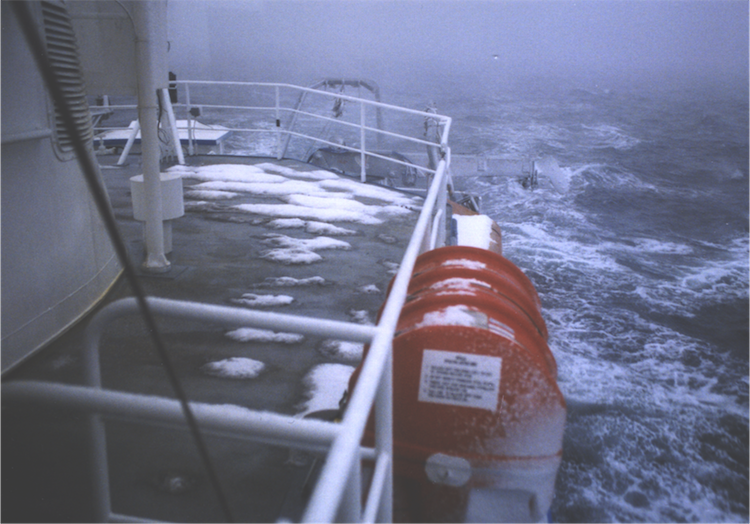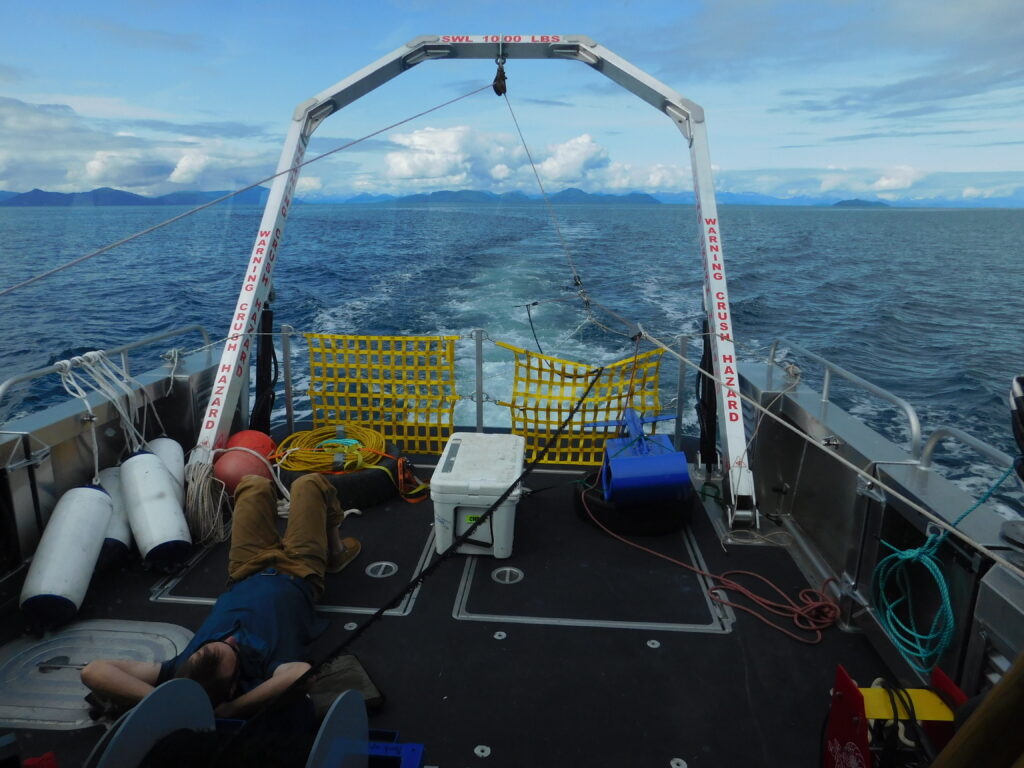Physical Environment of the Northern Gulf of Alaska:
Seasonal Cycles of Light and Nutrients

In the dark winter months, very little light makes its way into the ocean water. This is a challenge for the organisms living there. But wind and storms in the fall, winter, and spring help to bring essential nutrients from deeper in the ocean toward the surface. These nutrients are critical for life.

In the spring, longer days provide more light. Some organisms use this light and the available nutrients to photosynthesize. However, they can quickly consume the available nutrients by the time summer arrives.
Stratification is one reason there aren’t more nutrients available for organisms in the summer.
As the air warms, snow in the mountains melts. That freshwater flows into streams and rivers and eventually mixes with the surface ocean water. The surface water also warms with the return of the summer sun. The freshwater and warmth make the surface water less dense than the saltier, colder deeper water. This layering is called stratification.
When the Northern Gulf of Alaska is stratified, organisms in the surface layer have plenty of light. But they consume and usually run out of key nutrients because the stratification blocks mixing of nutrients from below. In the fall, daylight decreases, winds mix things up again, and the annual cycle repeats.
Variability
This cycle happens every year, but many factors influence:
- the intensity of the stratification
- how much nutrients are available
- how nutrients and organisms are distributed in the Gulf of Alaska
Changes in rain, snow, and air temperature affect how much freshwater and nutrients from the land enters the Gulf. Different patterns of wind, weather, and the input of freshwater can change ocean currents. Sometimes major currents even reverse directions!

Often, currents create spiraling eddies; here, the water currents flow in a loose circle and can concentrate nutrients and phytoplankton, creating a biological hot spot, where prey are concentrated and attract larger animals like seabirds and marine mammals.
Changes happen over longer time scales too. For example, water temperatures in the Gulf have warmed in the last fifty years. This may be pushing the limits of what some organisms can survive.
